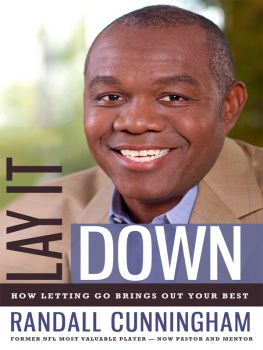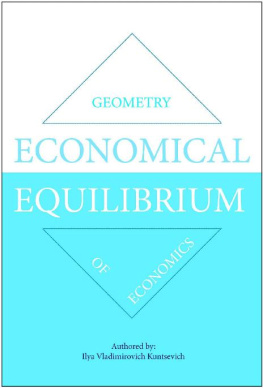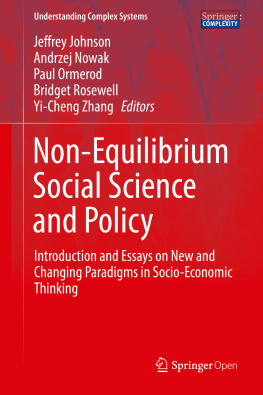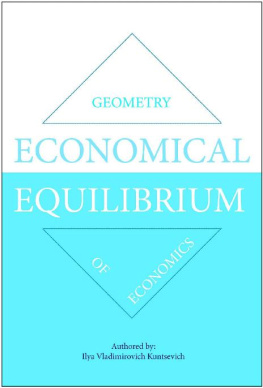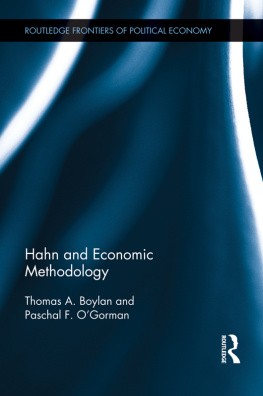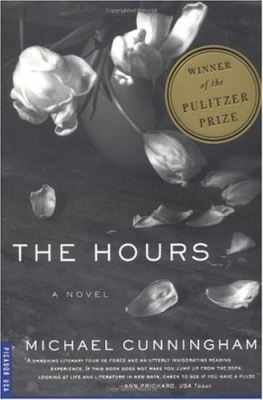Thomas J. Cunningham - Understanding Economic Equilibrium
Here you can read online Thomas J. Cunningham - Understanding Economic Equilibrium full text of the book (entire story) in english for free. Download pdf and epub, get meaning, cover and reviews about this ebook. year: 2021, publisher: Business Expert Press, genre: Politics. Description of the work, (preface) as well as reviews are available. Best literature library LitArk.com created for fans of good reading and offers a wide selection of genres:
Romance novel
Science fiction
Adventure
Detective
Science
History
Home and family
Prose
Art
Politics
Computer
Non-fiction
Religion
Business
Children
Humor
Choose a favorite category and find really read worthwhile books. Enjoy immersion in the world of imagination, feel the emotions of the characters or learn something new for yourself, make an fascinating discovery.
- Book:Understanding Economic Equilibrium
- Author:
- Publisher:Business Expert Press
- Genre:
- Year:2021
- Rating:4 / 5
- Favourites:Add to favourites
- Your mark:
- 80
- 1
- 2
- 3
- 4
- 5
Understanding Economic Equilibrium: summary, description and annotation
We offer to read an annotation, description, summary or preface (depends on what the author of the book "Understanding Economic Equilibrium" wrote himself). If you haven't found the necessary information about the book — write in the comments, we will try to find it.
Understanding Economic Equilibrium — read online for free the complete book (whole text) full work
Below is the text of the book, divided by pages. System saving the place of the last page read, allows you to conveniently read the book "Understanding Economic Equilibrium" online for free, without having to search again every time where you left off. Put a bookmark, and you can go to the page where you finished reading at any time.
Font size:
Interval:
Bookmark:

Understanding Economic Equilibrium
Understanding Economic Equilibrium
Making Your Way Through an Interdependent World
Thomas J. Cunningham and Mike Shaw

Understanding Economic Equilibrium: Making Your Way Through an Interdependent World
Copyright Business Expert Press, LLC, 2021.
Cover design by Cindy Beebe Langley
Interior design by Exeter Premedia Services Private Ltd., Chennai, India
All rights reserved. No part of this publication may be reproduced, stored in a retrieval system, or transmitted in any form or by any meanselectronic, mechanical, photocopy, recording, or any other except for brief quotations, not to exceed 400 words, without the prior permission of the publisher.
First published in 2021 by
Business Expert Press, LLC
222 East 46th Street, New York, NY 10017
www.businessexpertpress.com
ISBN-13: 978-1-63742-038-6 (paperback)
ISBN-13: 978-1-63742-039-3 (e-book)
Business Expert Press Economics and Public Policy Collection
Collection ISSN: 2163-761X (print)
Collection ISSN: 2163-7628 (electronic)
First edition: 2021
10 9 8 7 6 5 4 3 2 1
Description
Economic agents all over the world are trying to maximize their returns given their efforts, resources, and opportunities. They come together in markets that ultimately allocate goods and services among many competing interests. We can readily see how individual markets behave; its more difficult, but exponentially more important, to recognize the general equilibrium across all markets. Disturbances in one market have implications for others.
These interrelationships are particularly important to understand when policy changes are being considered where actions in one market will impose changes on other markets, and not always in obvious or pleasant ways. Understanding Economic Equilibrium reveals how all markets fit together, and how we as individuals fit into that bigger picture.
Keywords
economics; the economy; global economy; economists; GDP; gross domestic product; goods and services; equilibrium; macroeconomics; macroeconomy; free trade; supply and demand; Federal Reserve; the Fed; consumers and consumption; productivity and wages; labor markets; inflation; national income accounts; investment and inventories
Contents
This book was a joint effort, in the truest sense of the words, between myself and my coauthor, Tom Cunningham. Throughout our four-year acquaintance I found his ideas inspiring and he found my ability to communicate them a compliment to those ideas. I was delighted when he agreed to my suggestion that we write a book together. We were looking forward to its publication and planned to celebrate the event as one would expect coauthors to do. Unfortunately, on December 27, 2020, Tom died unexpectedly, approximately five months before the book was scheduled to be published. While I am delighted that our book is now available, the occasion of its publication is bittersweet without Tom here to enjoy it with me.
I first met Tom Cunningham in the spring of 2016 at a national banking conference sponsored by a client we shared. I was covering the presentations, writing summaries for a digest the client emailed each year following the conference to about 5,000 bankers. Presenters included senior-level advisors from leading national accounting firms, federal regulators, association officials, and members of the Financial Accounting Standards Board, which had just released a new accounting standard designed to prevent the kind of institutional stress and outright failures generated by the Great Recession.
The conference was in its fifth year and had developed a reputation as substantive and important, especially now that the attendees were going to be responsible for determining their banks quarterly reserves based on the new and complicated accounting standard. It was Toms first year to speak at the conference, his role as a recently retired Federal Reserve Bank senior economist to provide somewhat of a break from all the accounting speak with a summary view of the status of the U.S. economy. And while the audience was entertained with tidbits like his explanation of economics as the dismal science, they were stilled by his understanding of the workings of the worlds economies, insights amassed over thirty years researching macroeconomic realities and developing rationale for U.S. economic policy.
When the conference concluded and speaker ratings were compiled, Tom was the highest rated of the presenters, including two individuals who helped write the new standard. He had captivated his audience with a delivery as entertaining as it was informative, as clear and decipherable as it was insightful. Off stage, following his presentation and at the conference dinners and socials, he was swarmed by attendees with questions from how Brexit would affect the U.S. economy to how the markets would perform in the coming year, why inflation was low, and how baby boomers aging out of the labor force would impact GDP. And no matter how short his drink or cold his dinner, no question went unanswered.
Our mutual client was no dummy. The client knew Toms appeal and celebrity with this group of bankers was something to capitalize on more than once a year. Tom and I had become something of conference pals, as well as coconspirators as I was the one committing his spoken words to the written word. And when the client asked him to write a monthly blog, Tom invited me to work with him as his editor. We co-wrote the blog the first Friday morning of each month as the Bureau of Labor Statistics released its employment report until the client sold the business to a consolidator at the end of 2017. The new owners wisely kept Tom and his blog on board, but assigned the editing to their in-house writers.
But Im no dummy either. Id been writing about financial issues for financial businesses for more than forty years, long enough to recognize how uniquely Tom connected with audiences, how much he could convey in a few easily digestible sentences, how easy he made it to understand why money makes the world go round.
It was August 2019 and the first time Id talked with Tom since our client had been acquired. Hi, Tom. Its Mike Shaw. Have you ever thought about writing a book? Of course he hadnt. With almost weekly speaking engagements and now as chief economist for the Atlanta Chamber of Commerce, when would he find time? Hell, he didnt even have a website. But the more I pressed the better the idea must have sounded, because I was able to convince him to give it a try.
Getting a business book published starts with writing a proposal that includes sample chapters and a detailed outline and is carefully formatted according to the directions in one of the plethora of books telling you how to write a business book proposal. (Writing a book about how to get published is one of the surest ways to get published.) It took Tom and I almost a year to complete our proposal, but when we submitted it for consideration, it elicited interest, including from the publisher for whom we are now so grateful.
What you will read here is absolutely consistent with how Tom talked to his audiences. He explained in plain language the key ingredients in the global economic soup, simplifying what can be difficult concepts complicated by the intricacies of how they work with and against each other, how they interconnect and interrelate. Whats the difference between real and nominal GDP? How do global financial markets determine the value of a publicly traded U.S. manufacturer? What does it mean to pay the losers and why does it make sense? And what is an inverted yield curve actually telling us?
Font size:
Interval:
Bookmark:
Similar books «Understanding Economic Equilibrium»
Look at similar books to Understanding Economic Equilibrium. We have selected literature similar in name and meaning in the hope of providing readers with more options to find new, interesting, not yet read works.
Discussion, reviews of the book Understanding Economic Equilibrium and just readers' own opinions. Leave your comments, write what you think about the work, its meaning or the main characters. Specify what exactly you liked and what you didn't like, and why you think so.




